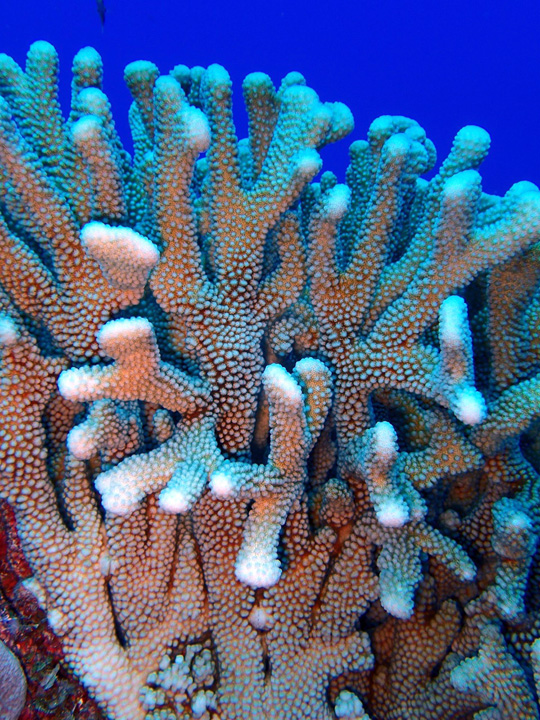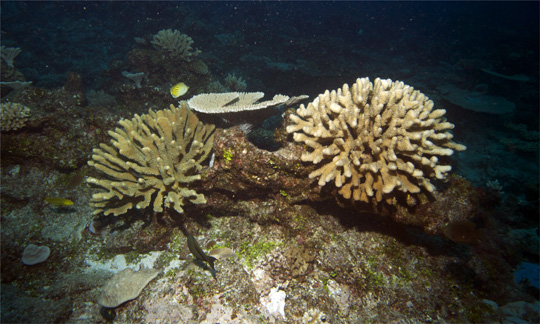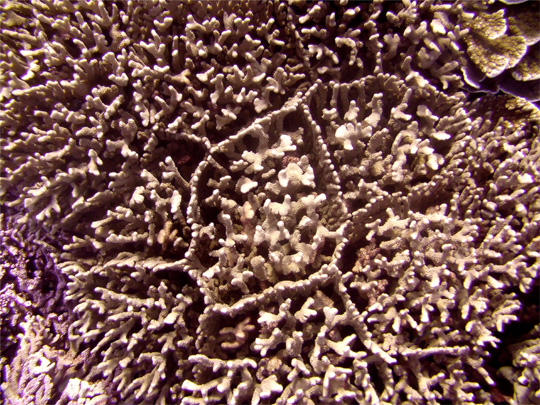Cauliflower coral, in the genus Pocillopora, are among the most widely distributed and most abundant corals found on the fore reef. These branching corals are covered with small bumps (called verrucae), which contain corallites and help in the identification of the genus.

Identification of cauliflower coral to species level, however, is hardly an easy job. This genus is very plastic, taking on a different shapes, sizes, color and appearance depending on habitat and environmental conditions. The same species from exposed reefs usually have thicker branches than those in sheltered areas and in some cases this variation occurs within a single location.

Identifying Cauliflower Coral Species
In French Polynesia, the research team has been able to easily recognize some cauliflower coral species, but they have had difficulties distinguishing the Pocillopora corals that have characters that fit different species. Inspecting the skeleton structures under a microscope does not make this easier, as different species have overlapping features. For many, the scientists will have to resort to genetics to tell species apart. Sometimes, though, a unique structural feature can help distinguish two similar species. In Tenarunga and Maria Est Atolls (Acteon Group), the scientists came across an almost hexagonal pattern surrounding packed colonies of one of the larger varieties of Pocillopora. This feature is a unique character of Pocillopora zelli, a species of cauliflower coral that had not been previously described to occur here.

The beauty of the almost mathematical pattern unveiled a new record for the local coral diversity and the range expansion of the distribution of Pocillopora zelli.
(Photos by: 1-2 Joao Monteiro, 3 Marie Kospartov)
If you liked this blog, you might also like: Corals in the Devil’s Crown from our Galapagos Mission.
